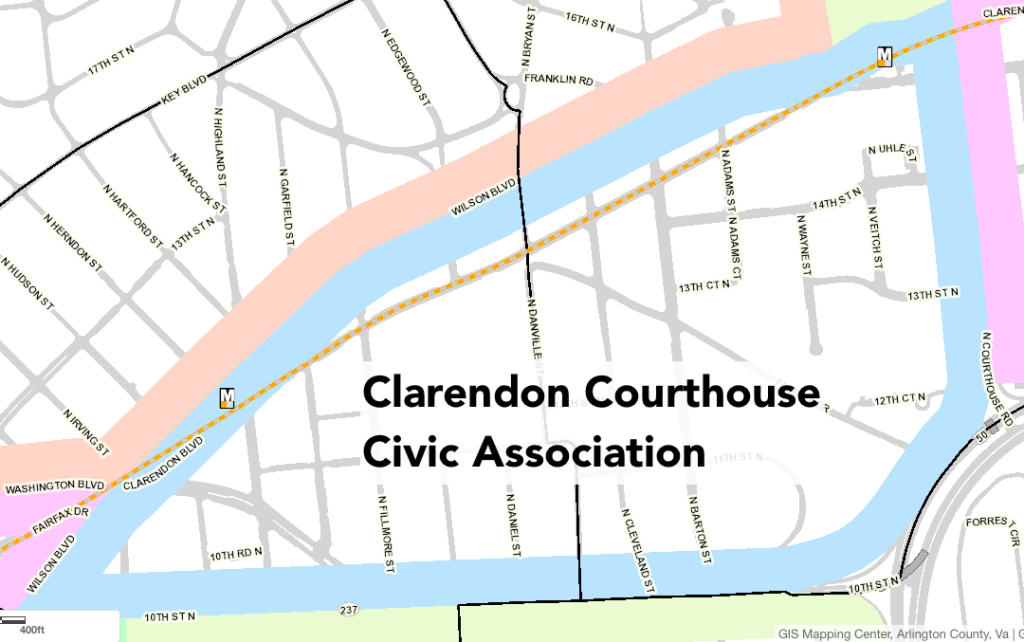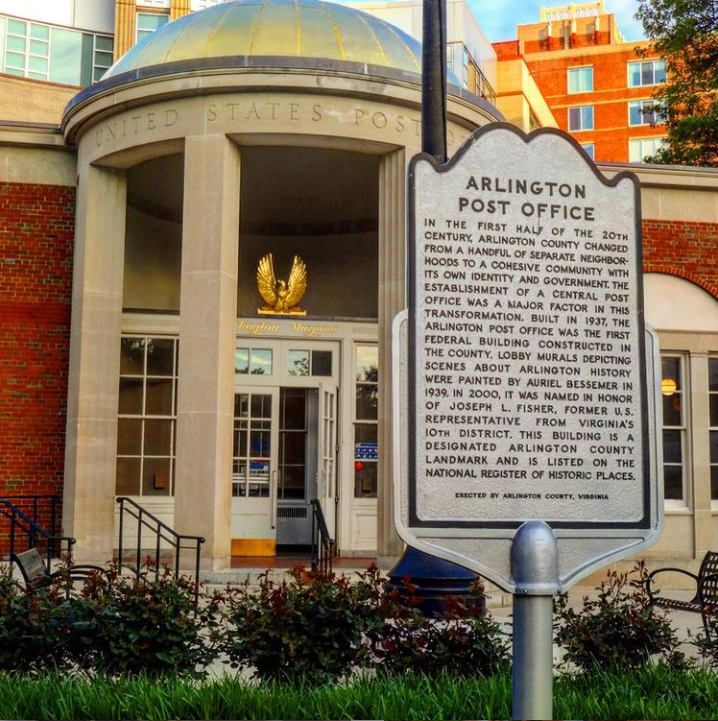
Our neighborhood is bounded by Wilson Boulevard on the North, Courthouse Road on the East, and Arlington Boulevard and 10th Street on the South.
The Civic Association
Residents here appreciate the vibrant mix of uses that comes with having an important commercial corridor and a civic center in our neighborhood. Members of the CCCA are proud of the role we’ve played in land-use planning (from County-wide to site-specific) that have resulted in better development outcomes for current and future residents.
Here’s an example, as told by a long-time CCCA member:
My arrival (in the neighborhood) coincided with our neighborhood strongly opposing a developer’s proposal to build a Home Depot with a large surface parking lot where the Market Common/Clarendon Crossing now stands. Staff’s argument at the time was that the site was already a giant surface lot (for a Sears outlet that had long since closed), and that we should immediately accept any developer’s offer to change that. Our neighborhood opposed that way of thinking and said we should hold out for something better. Home Depot pulled out and, instead, we worked alongside staff and another developer to get an amazing, appropriately-scaled development with townhomes to transition from the single-family homes to the south, several hundred additional new apartment units, an enormous (and now highly-sought after) retail footprint, appropriate pedestrian amenities, green space, and a centrally-located off-street public parking garage. I’m really glad neighbors didn’t allow that surface lot to be replaced with “whatever the [first] developer wanted to do”.
Neighborhood engagement had everything to do with this outcome. It’s a nice reminder that :
a) When the CCCA, County, and developers work together thoughtfully, we get better outcomes.
b) Our actions and decisions today have long-run impacts . . . for many, many people
The Land and Neighborhood
Evidence of more than a dozen prehistoric Native American tribes has been discovered in Arlington County. A thriving Necostin village was documented in the early 17th century by Captain John Smith on what is now the site of the Pentagon. We don’t know if there is more detailed information about first peoples in our specific boundary area. (If you do, please let us know.)
The first residential subdivision of the area was laid out in 1899 and named Clarendon after the Earl of Clarendon (1609-1674). With the addition of the trolley line linking the area with Washington, D.C., construction of homes and shops was so rapid that before 1910, at least five “additions to Clarendon” were subdivided by various developers.
In addition to residential uses, the Clarendon and Courthouse neighborhoods each had their own character. Clarendon, at the west end of the Clarendon-Courthouse Civic Association, was the heart of Arlington’s commercial district dating back to the early part of the 20th century. Courthouse, at the east end, has always been Arlington’s civic center. These continued uses, coupled with a METRO Rail stop at each end of the neighborhood, make Clarendon-Courthouse among the most vital neighborhoods in Arlington County.
For a more complete neighborhood history, read the Clarendon Courthouse Neighborhood Conservation Plan.
